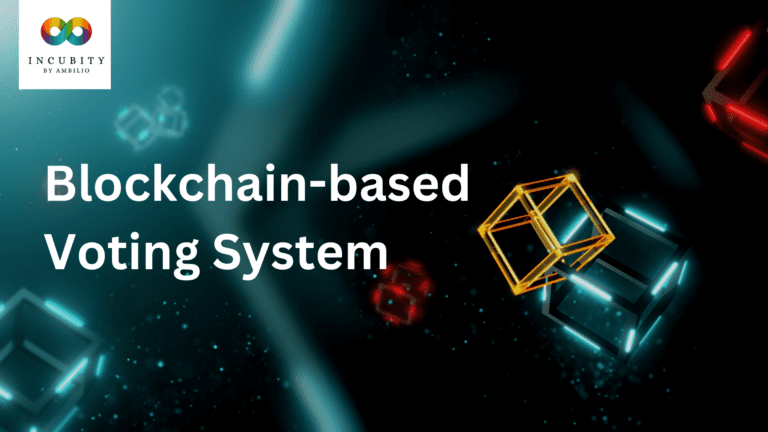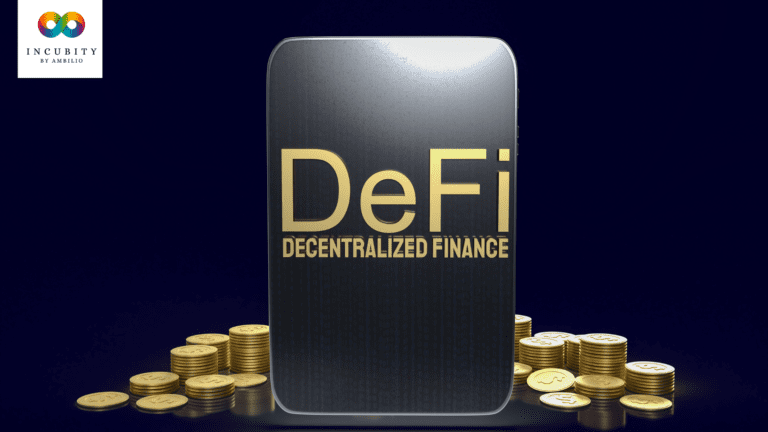Bitcoin has been gaining popularity over the past few years. As more and more people start using and investing in Bitcoin, they need to understand how to securely store and manage their bitcoins. That’s where a Bitcoin wallet comes in. A Bitcoin wallet is essentially a software program that stores the private and public keys that are used to access and manage your bitcoins. It allows you to send and receive bitcoins, and it also keeps track of your balance.
In this article, we will be providing a guide to Bitcoin wallets. We will discuss the different types of wallets, how to backup and recover your wallet in case of loss or theft, some advanced topics related to blockchain wallets, and some common issues that users may encounter when using blockchain wallets. By the end of this article, you will have a solid understanding of what a Bitcoin wallet is, and how to use one safely.
Types of Bitcoin wallets
There are two main types of Bitcoin wallets: hot wallets and cold wallets.
Hot wallets are wallets that are connected to the internet. They are typically easier to set up and use, but they are also more vulnerable to hacking and theft. Hot wallets can be further divided into two categories: online wallets and mobile wallets.
Online wallets are web-based wallets that can be accessed from any device with an internet connection. They are convenient to use, but they also rely on the security of the website or service hosting the wallet. Examples of online wallets include Coinbase, Blockchain.info, and MyEtherWallet.
Mobile wallets are apps that can be installed on a smartphone or tablet. They are similar to online wallets, but they offer the added convenience of being able to make transactions on the go. Examples of mobile wallets include Mycelium, Jaxx, and Breadwallet.
Cold wallets, on the other hand, are offline wallets. They are considered to be the most secure type of wallet as they are not connected to the internet, and therefore, are less vulnerable to hacking and theft. Cold wallets can be divided into two categories: hardware wallets and paper wallets.
Hardware wallets are physical devices, such as a USB drive, that can store a user’s private keys offline. They are considered to be the most secure type of cold wallet as they are not vulnerable to hacking or malware. Examples of hardware wallets include Trezor, Ledger Nano S, and KeepKey.
Paper wallets are simply physical printouts of a user’s private and public keys. They are considered to be a form of cold storage, as they can be stored in a safe place offline. They are easy to use, but they are also vulnerable to physical damage.
We see that hot wallets are convenient and easy to use but less secure, while cold wallets offer better security but may be less convenient to set up and use.
It’s important to weigh the pros and cons of each type of wallet and choose the one that best suits your needs.
Backup and Recovery
When it comes to Bitcoin wallets, one of the most crucial aspects to understand is how to backup and recover your wallet in the event of loss, theft, or damage. It’s important to regularly create backups of your wallet to ensure that your funds are safe and secure. Here are some detailed tips on how to properly backup and recover your Bitcoin wallet.
- Keep multiple copies of your wallet’s backup in different locations. One copy should be kept on a USB drive, another on a hard drive, and a third on a cloud storage service such as Google Drive or Dropbox. This ensures that even if one copy is lost or damaged, you still have other copies to fall back on.
- Encrypt your backup with a strong password. This will protect your backup from unauthorized access, even if it falls into the wrong hands.
- Store your backup in a safe place offline. This is important to protect against potential hazards such as fire or water damage. A safe deposit box or fireproof safe is a good option.
- Keep your private key and seed phrase in a separate, secure location. Your private key is what grants access to your funds, so it’s important to keep it in a place that’s not easily accessible to others.
- If you lose access to your wallet, you can recover it using your private key or seed phrase. Be sure to follow the instructions provided by your wallet provider on how to recover your wallet. It’s important to keep in mind that the process of recovery may vary depending on the type of wallet you’re using.
- If you’re using a hardware wallet, make sure to keep the recovery seed in a safe place. This is the only way to recover your funds in case the device is lost or stolen.
- Keep an eye on your balance and transaction history to detect any suspicious activity, and notify your wallet provider immediately if you suspect your wallet has been compromised. This can help prevent any further damage and help you recover your funds on time.
It’s important to follow the instructions provided by your wallet provider for recovery, and to keep an eye on your balance and transaction history. By taking these steps, you can ensure that your funds remain secure and accessible at all times.
Key terms related to wallets
In this section, we will discuss some advanced and key terms that are related to blockchain and available in some wallets.
Bitcoin Multisignature:
Bitcoin multisignature, also known as multi-sig, is a feature that allows multiple parties to jointly control a Bitcoin address. This is achieved by requiring more than one signature to authorize a transaction.
With a traditional single-signature Bitcoin address, the owner of the private key associated with that address has full control over the funds stored at that address. In contrast, a multi-sig address requires multiple private keys to authorize a transaction. This can be useful in situations where multiple parties need to jointly control access to funds, such as in a business setting or a shared savings account.
An example of a 2-of-3 multi-sig address would require any two out of three individuals to sign off on a transaction before it can be broadcast to the network. It’s also possible to create more complex multi-sig schemes that require multiple signatures from different parties to authorize a transaction.
Bitcoin multisignature provides an added layer of security as it makes it harder for a single individual to steal the funds. It is also useful for corporate and organizational settings where multiple individuals manage funds.
Segregated Witness:
Segregated Witness (SegWit) is a proposed update to the Bitcoin protocol that changes the way data is stored on the blockchain. SegWit separates the signature data (also known as witness), from the transaction data (also known as base), in a Bitcoin block. This allows for more transactions to fit into each block, increasing the overall transaction capacity of the network.
One of the main issues SegWit addresses is the problem of transaction malleability. This is a subtle issue in the current Bitcoin protocol that can allow a third party to change the “witness” data in a transaction before it is confirmed on the blockchain. This can create confusion, and make it difficult for some transactions to be confirmed. By separating the witness data from the base data, SegWit makes it more difficult for third parties to change the witness data and makes it easier for transactions to be confirmed.
Another benefit of SegWit is that it allows for the creation of second-layer solutions such as the Lightning Network, which enables faster and cheaper off-chain transactions.
The adoption of SegWit by the bitcoin network was a hard fork, meaning that it required the consensus of the network participants to be implemented. It was activated in August 2017 and since then many wallet providers and exchanges have started to support it.
We can say that SegWit is a technical improvement to the bitcoin protocol that aims to increase the transaction block size and lower transaction fees, It can be implemented by wallets that support it, it is not a direct feature of bitcoin wallets but it can help the users to have a better experience while using their wallets.
Bitcoin Script:
Bitcoin Script is the programming language used to create scripts for Bitcoin transactions. It is a simple stack-based language that is used to define the conditions under which a transaction can be added to the blockchain.
A script is essentially a set of instructions that determine how the inputs of a transaction can be spent. For example, a script could specify that a transaction can only be added to the blockchain if a specific public key is used to provide a digital signature, or if a specific combination of public keys is used.
Bitcoin Script is used to create various types of transactions such as standard transaction, multisig transactions, and smart contracts.
Standard transaction, also known as a pay-to-public-key-hash (P2PKH) transaction, is the most common type of transaction on the Bitcoin network. In this type of transaction, the script consists of a single instruction that requires a signature from the holder of a specific private key, which corresponds to a specific public key hash.
Multisig transaction, also known as pay-to-script-hash (P2SH), uses a script that requires multiple signatures before the transaction can be added to the blockchain.
Bitcoin script can also be used to create more complex smart contracts that can be used to facilitate decentralized applications.
The syntax of the Bitcoin Script is not user-friendly, it’s intended for developers to create scripts for specific use cases.
Lightning Network:
The Lightning Network is a second-layer solution built on top of the Bitcoin blockchain. It is a decentralized network of payment channels that allows for fast, low-cost, and private off-chain transactions.
The Lightning Network is designed to address the scalability limitations of the Bitcoin blockchain by allowing users to open payment channels between themselves. These channels allow for multiple transactions to occur off-chain, without the need to broadcast each transaction to the blockchain. This reduces the number of transactions that need to be processed by the network, increasing the overall transaction capacity of the Bitcoin network.
When a user wants to make a payment, they simply send the funds through the payment channel to the recipient. This transaction is not broadcast to the blockchain, but is instead recorded in a “commitment transaction” that is signed by both parties. This commitment transaction is not broadcast to the blockchain until one of the parties wants to close the channel.
The Lightning Network also allows for multi-hop payments, where a payment can be sent through multiple channels before reaching the final recipient. This increases the privacy of transactions, as the path of the payment is not visible on the blockchain.
Overall, the Lightning Network aims to provide a fast, low-cost, and private way for users to transact on the Bitcoin network, while also increasing the overall transaction capacity of the network.
Troubleshooting
This section provides information and solutions to common issues that users may encounter when using blockchain wallets. These issues could include:
- Transactions not confirming: If your transaction is not getting confirmed, it might be because the fee you have included is too low. Bitcoin transactions need to be confirmed by miners, who prioritize transactions with higher fees. To fix this, you can use a fee estimator to include a higher fee in your transaction.
- Incorrect balance: If your wallet is showing the incorrect balance, it might be because of an issue with the blockchain. The most common cause is that your wallet is not fully synced with the blockchain, which can be fixed by waiting for the sync to complete or by re-syncing your wallet.
- Lost private keys: If you have lost access to your private keys, you will no longer be able to access your funds. It’s important to keep a backup of your private keys in a safe and secure place. If you have lost access to your private keys and have not made a backup, it may be impossible to recover your funds.
- Wallet not connecting: If your wallet is not connecting to the network, it could be because of an issue with your internet connection or a problem with the wallet’s servers. Check your internet connection and try restarting the wallet. If the problem persists, contact the wallet’s support team for assistance.
- Wallet not responding: If your wallet is not responding, it could be due to a software bug or a problem with your device. Try restarting the wallet and your device. If the problem persists, contact the wallet’s support team for assistance.
- Wallet showing incorrect address: If your wallet is showing an incorrect address, it could be because you have accidentally copied the wrong address. Double-check the address before sending any funds. If you have already sent funds to the wrong address, it may not be possible to recover them.
- Unrecognized transactions: If your wallet is showing transactions that you do not recognize, it could be because someone has gained access to your private keys. Change your password and contact the wallet’s support team for assistance.
- Wallet not updating: If your wallet is not updating, it could be because of a problem with the wallet’s servers. Wait a few minutes and try again. If the problem persists, contact the wallet’s support team for assistance.
- Wallet not compatible with the latest version of bitcoin: It’s important to keep your wallet updated to ensure compatibility with the latest version of bitcoin. If your wallet is not compatible with the latest version, you may need to upgrade or switch to a different wallet.
- Multisignature transactions not working: If you are experiencing issues with multisignature transactions, it could be because of a problem with the other party’s wallet or a problem with the transaction itself. Double-check the transaction details and contact the other party’s wallet support team for assistance.
Final Words
In conclusion, a blockchain wallet is a digital wallet that allows individuals to store, send and receive digital assets such as cryptocurrencies. There are various types of blockchain wallets available, including software wallets, hardware wallets, and paper wallets. It is important to create backups and have a recovery plan in place in case of any issues with the wallet. Advanced topics such as multi-signature, segregated witness, blockchain script, and lightning networks can also be implemented for added security and functionality. When encountering any troubles with the blockchain wallet, it is important to follow the troubleshooting steps provided to ensure the safe and secure storage of digital assets.
Overall, a blockchain wallet is a crucial tool for anyone looking to participate in the world of cryptocurrency and it is important to understand the different options available and best practices for safe usage.







